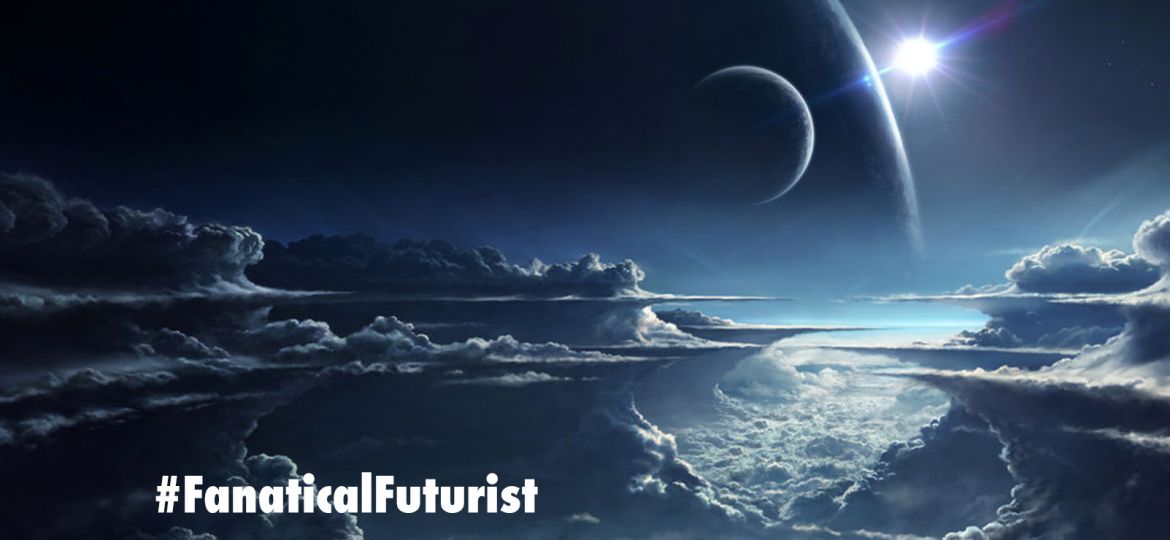
WHY THIS MATTERS IN BRIEF
Today we have the power to create new species of animals never previously thought possible and at some point it seems inevitable that humans will start seeding new life across the universe.
In the past six months’ scientists have created alien life forms unlike anything we’ve ever seen on Earth before, with six, not four, DNA nucleotides, and digitised and then successfully teleported life, in this case a virus from one room to another, however, looking at the technology, which consisted of little more than a computer and a 3D bioprinter, this could have just as easily been from the scientists’ lab to a colony on Pluto – if we ever wanted to go there that is.
In the past couple of decades the rate at which organisations like NASA has been discovering new planets has accelerated dramatically, and as we all know when you find a new planet there are a host of voices asking when we’re going to not just explore them but terraform and inhabit them, and now some of these voices are producing proposals.
Voices like Elon Musk who recently announced his plans to build a colony on Mars, and Stephen Hawking who recently proposed building fleets of self-healing, interstellar nano-spacecraft that would cross the galaxies at a fifth light speed.
Now though there’s another voice joining them Dr. Claudius Gros, whose proposal “Project Genesis” aims to seed distant planets with life, and if you’ve ever seen the movie Prometheus then you’ll get the idea.
In 2016 Gros, a theoretical physicist from the Institute for Theoretical Physics at Goethe University Frankfurt, published a paper that described how robotic missions equipped with gene factories, or cryogenic pods, could be used to distribute microbial life to “transiently habitable exoplanets,” in other words planets capable of supporting life but that are unlikely to give rise to it of their own accord.
Exoplanets come in all sizes and have all sorts of environments and compositions and the ultimate aim of the Genesis Project is to “offer terrestrial life alternative evolutionary pathways on those exoplanets that are potentially habitable but yet lifeless.”
The basic philosophy that most scientists seem to sign up to these days is that simple life is common in the universe and that complex life is rare, but as we’ve seen on Earth, if you had good conditions, simple life can develop very fast, but that said complex life could still struggle to get a firm enough foothold. For example, here on Earth the Cambrian Explosion only happened 500 million years ago, roughly 4 billion years after Earth was formed, so the Gros’ theory goes that if we give planets the opportunity to fast forward evolution we can give them the chance to have their own Cambrian Explosions much faster than would otherwise happen.
As for which planets Gros and his team would target first the prime candidates are habitable oxygen planets around M-Dwarfs like the recently discovered TRAPPIST-1 because it’s very likely that the oxygen rich primordial atmosphere of these planets are the same ones that would have prevented Abiogenesis, the formation of life, in the first place, plus it’s thought that our galaxy could potentially harbour billions of habitable but lifeless oxygen planets.
But then comes the next big question – what sorts of organisms would we, or should we, send?
Well, here Gros thinks the first wave should consist of unicellular Autotrophs – the photosynthesising bacteria, like cyanobacteria, and eukaryotes, which are the two basic cell types that make up all complex life on Earth. Then, Heterotrophs, organisms that feed on other organisms, would then follow in the second wave because they can only exist after autotrophs exist and take root.
As for the method of delivery though, well, that depends on where you want to get to but there are plenty of options here too. We could send miniaturised gene factories, for example, sending in a gene bank, and then selecting the most optimal organism to send down to the planet’s surface once it’s been analysed, but if that wasn’t possible we could also send frozen germs, or even the biological teleporter I discussed earlier.
Moving several steps further along though we could use synthetic biology to design synthetic lifeforms that are custom built to thrive in the sorts of environments that we think they’ll encounter, something that even NASA has considered, although in their case they’ve been considering designing genetically engineered astronauts that do everything from photosynthesise to create their own custom proteins.
Science fiction movies, like Prometheus, are rife with scientists trying to design new alien life forms and “play God,” and while this could be very dangerous on Earth in the deep recesses of space, on “inhospitable” planets, well, scientists could go crazy, so who knows, maybe in a few generations time our space faring descendants will come across a poison spitting, three headed, six legged camel leopard. And they’ll have Gros to thank for it.
















